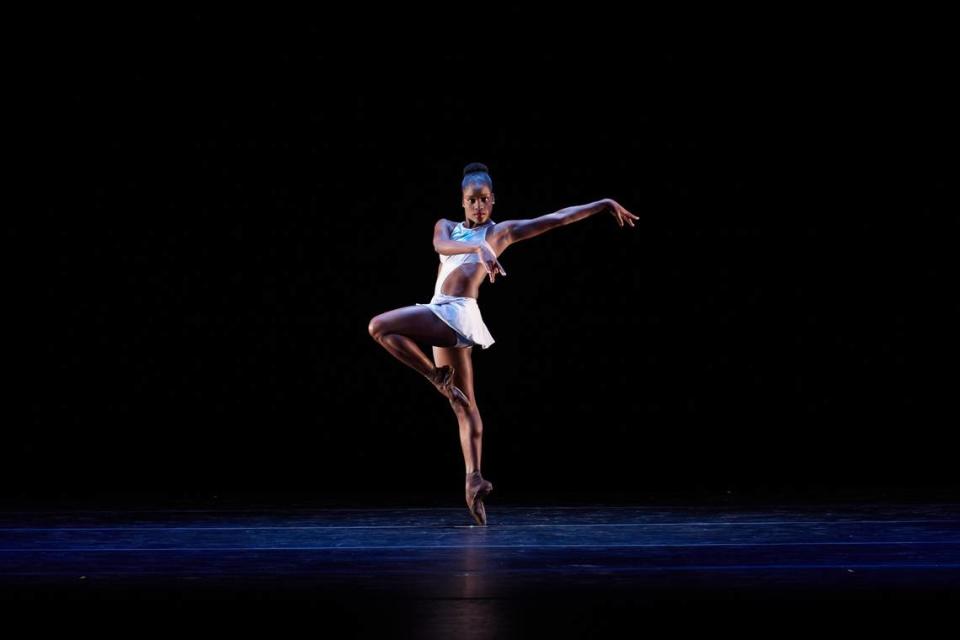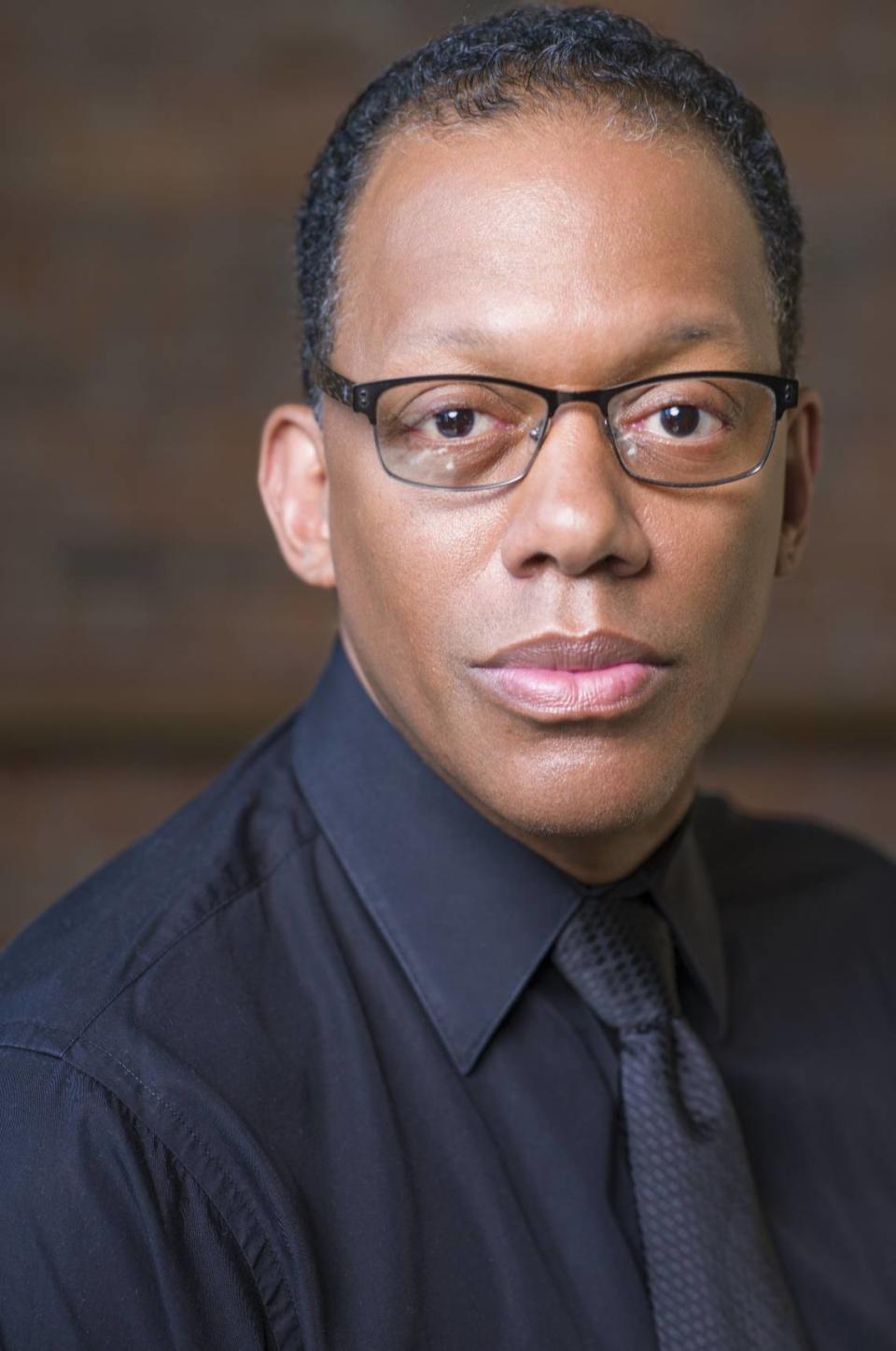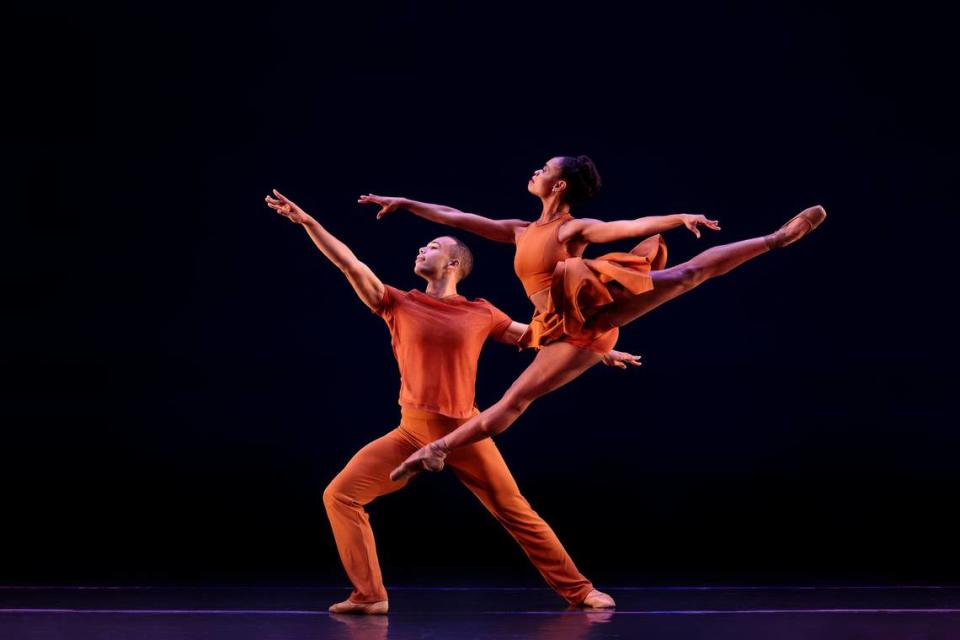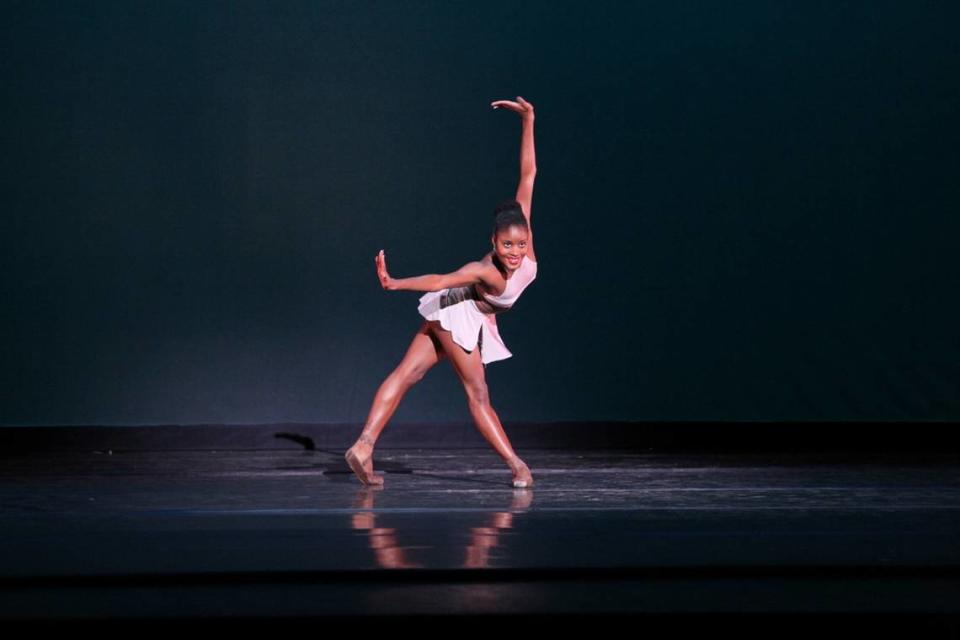Dance Theatre of Harlem returns to Charlotte with ballet, soul music and ... Radiohead?
- Oops!Something went wrong.Please try again later.
- Oops!Something went wrong.Please try again later.
When artistic director Robert Garland reflects on the ballet “Return,” which he choreographed two decades ago for the Dance Theatre of Harlem, he recalled it was an intimidating undertaking.
The composition, a blend of neoclassical movements and soul music, ultimately was a success. It helped bolster a continuing goal for the acclaimed multicultural ballet troupe: to draw in diverse audiences to see a European art form danced by African Americans.
For more than five decades, this infusion of classical, neoclassical and contemporary styles has defined the internationally acclaimed dance theater. Co-founded in 1969 by the late Arthur Mitchell and Karel Shook, the 18-member company will make its first appearance at the Belk Theater for a two-night engagement in Charlotte in February.
It will be the third time Dance Theater of Harlem has visited the Queen City, having performed at other Blumenthal Arts venues in 2014 and 2016 respectively, said Tommy Prudenti, who heads education and special programs at the Blumenthal.
This time the company will present four works, including two of Garland’s original pieces: “Return,” which infuses music by James Brown and Aretha Franklin, and “New Bach” also a neoclassical piece set to music by Johann Sebastian Bach.
A third piece called “Take Me With You,” choreographed by Robert Bondara, is set to music by English rock band Radiohead, which the dance troupe is premiering in Charlotte.
The company will also premier in Charlotte a version of the sublimely classical work “Pas de Dix,” a dance for 10, drawing on choreography originally set by George Balanchine from the ballet “Raymonda.”
The dance company also will present a shortened morning performance on Feb. 9 for 59 schools and groups at Belk Theater, Prudenti said in an email. And Dance Theatre of Harlem is planning two in-school master classes taught by company artists for students at Northwest School of the Arts and Julius Chambers High.

About Dance Theatre of Harlem
Dance Theatre of Harlem began a year after the 1968 assassination of the Rev. Martin Luther King Jr.
Mitchell already was known from his days performing principal roles with New York City Ballet. As a male African American dancer in ballet, he broke barriers and defied stereotypes and prejudice throughout his lengthy performing career.
Recognizing he needed to do something for his community in the aftermath of the assassination, Mitchell returned to his roots to start a school and company for young people of color, especially in his native Harlem. Shook, an international ballet master and Mitchell’s former mentor, partnered with him.
Mitchell believed a school had no meaning without a company to aspire to and there needed to be a place to develop and inspire talent for a company. Both were born for each other.

Garland, a former DTH principal dancer, was tapped by Mitchell to become the company’s resident choreographer. A Philadelphia native, and Julliard School alum, Garland shared with The Charlotte Observer what Charlotte audiences can expect and the challenges of representation with Blacks in ballet.
Tell us how you’ve curated a program to draw varied audiences?
We are opening and closing with two of my ballets, “New Bach” and “Return,” that I did, actually when Arthur Mitchell was still alive. In our day, things were always sort of separate, like you did the ballet thing and then you did you did this (contemporary) thing. I was trying to find space, where everything could kind of coexist within one ballet. With (these) I was able to mix the ballet with some of our contemporary vernacular dancing.
The beauty of the Dance Theatre of Harlem was that there was a wonderfully cool approach to theatrical presentation that included ballet, but it also had the popular music. And I’d been highly influenced by that and believe in that, because it also brought a certain type of people into the theater for ballet that probably would never have been there before. Then there’s another duet that’s going to premiere here. It’s called “Take me with you.” It’s to the music of Radiohead, so it’s popular music.

Of the ballets being presented in Charlotte, which one has special meaning for you?
I would have to say “Return.” It holds a special place in my heart because I was starting as a choreographer. I wanted to do something to pop music. I’m thinking about James Brown, Arthea Franklin. And so then (Mitchell) was like, oh, OK. That’s fine. He gets on the phone and calls James Brown.
‘Hi, James. I have a dancer who wants to use your music.’ Talks with him. And then he puts down the phone and dials again. ‘Hi, Aretha, I have a dancer who is using your music.’ And I was like, wow, this is crazy. He did know them very well and that was the beauty of that time. He would watch the rehearsals of “Return” and he would sing the music under his breath. It was quite beautiful.
You know what else I love about “Return”?
There was a baseball player in Washington, D.C., who came with his wife because this company was doing a ballet to James Brown. And he was Black and he was thrilled that he had gotten to see a ballet about James Brown. “Return” has always drawn African American men. Oftentimes, a lot of men will come to hear James Brown, like, ‘I gotta go. It’s James.’ And I love that.

Why is representation of Black people in ballet still important for you and DTH’s legacy?
Race and representation is such a big deal. Representation still does matter. I wanted to have a ballet ( “Pas de Dix”) that was more classical, in terms of attire, meaning tutus and the men in classical jackets. We still have little kids that are training in ballet and they should get to see their heroes, their female heroes in tutus, just like everyone else, right? We’ve got to begin to represent both sides of our blackness and with regards to the ballet genre.
We are another facet of the African American diamond. I think we should be allowed to be viewed in that complicated and nuanced way.
That is one of the challenges that we have with both our history and our legacy. Arthur Mitchell, yes, he did start a company that was predominantly African American that was focused on ballet, but it was always much larger than that. He always said, ‘you’re representing something much larger than yourself.’
What is the hardest part with furthering the legacy?
It’s finding people that are willing to support the training of young people in the arts, that is the hardest part. All families, and particularly families of color are having issues with just wanting to take their child to study. Not having the opportunity robs the children of options. They need options.
Part of the mission is getting the world to understand that the skills, if you practice it properly, are transferable. It allows (students) to understand that it’s bigger than just the dance itself, but you’re learning life skills that will eventually take you to other places, if you do the work.
Want to go?
What: Dance Theatre of Harlem
Where: Belk Theater
When: 8 p.m., Feb. 9 - Feb. 10
Tickets: Go to blumenthalarts.org
Editor’s note: Lisa Vernon Sparks is an alumnus of Dance Theatre of Harlem
More arts coverage
Want to see more stories like this? Sign up here for our free “Inside Charlotte Arts” newsletter: charlotteobserver.com/newsletters. And you can join our Facebook group, “Inside Charlotte Arts,” by going here: facebook.com/groups/insidecharlottearts.
Sign up here for Kaleidoscope newsletter, essential conversations on race and culture.

